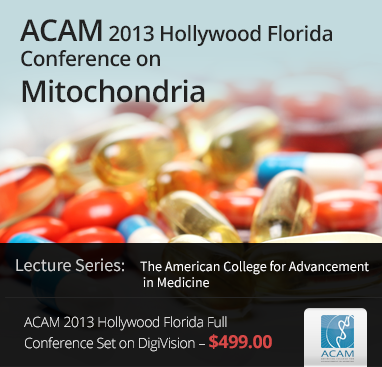- Dr. Sangeeta Pati - Hormones, Nutrition, Detoxification, Mind, and Body
- IV Nutrition Textbook
- IV Nutrition and BHRT Workshops - by Central Drugs
- Regenerative Business Summit by Medfit
- Cash Practice Success Summit
- Special Topic Sets on Hormones, Weight Loss, Stem Cells, Cancer, Sex, and more
- Ron Rothenberg, MD Special Set
- Thierry Hertoghe, MD Special Set

The good news is I’m probably not going to tell you anything that you don’t already know, so this lecture is probably going to be short so we can all get on to doing something fun tonight.
When Greg asked me to speak, of course he said, ‘Well what do you want to speak about?’ And of course the answer was exercise because I’m kind of a one trick pony in that regard. But I also don’t think that you can have an age management conference without somebody talking in some way about exercise, so that’s what I’m going to do.
What I wanted to do is talk about the some of the theories currently that are out there regarding the anti-inflammatory effects of exercise. We know that exercise is broadly beneficial to all areas of the body, so you know how does that occur? So we’re going to talk about the cellular mechanisms for that; I don’t want to spend a whole lot of time because I don’t want to make this into a biochemistry lecture.
So let’s begin, I wanted to show you a chart here, this is from Peterson who’s done a lot of research in this area and he’s come up with this concept of physical inactivity. If we look at what happens when the body’s inactive, we see an overlap of these diseases: type 2 diabetes, depression, cardiovascular disease, colon cancer, breast cancer and dementia.
So we have this prevailing theory that as a result of inactivity, we get an accumulation of abdominal visceral fat, which of course leads to macrophage infiltration of that fat and inflammation, chronically in all organ systems and that leads to insulin resistance, atherosclerosis, neurodegeneration and tumour growth. So this is what he calls the disease of physical activity.
There’s also an overlap of this brain derived neurotrophic factor with these, this is a neurotropic factor that helps regenerate neural tissue, it’s active in areas of the brain that are related to memory and learning and so we also see this overlap. Some of the research done on this factor shows that actually they can’t detect it systemically but think that is works in a fashion in a muscle, it’s possible that more research will see this acting remotely but it correlates with this disease.
So what I want to talk about is exercise as medicine; I truly believe that exercise is medicine, it’s the best medicine that we have. It’s a safe and inexpensive way to have the body lowered state of inflammation, I think it’s the premier way the body lowers its state of inflammation. Acute inflammation is the means by which the body repairs and heals itself, when it becomes chronic of course we know that it’s associated with a lot of age related diseases.
Exercise by way of mechanical contraction of the muscles releases cytokines into the bloodstream which introduces a anti-inflammatory cascade and allows the body to heal, repair and regenerate itself. It works with the body’s innate mechanisms to do this; early in our existence, this is how man healed themselves is through mechanical contraction of the muscles. This lowered the inflammation, when it was hyperacute it helped heal the body through the inflammatory process but modern life has virtually eliminated this mechanism in terms of repair of the body and it’s something that we absolutely have to put back into our life because we simply will not get either the volume or the intensity of exercise that’s necessary for the body to continue to heal itself.
To purchase the entire lecture series, click here.
May
04,
2015






